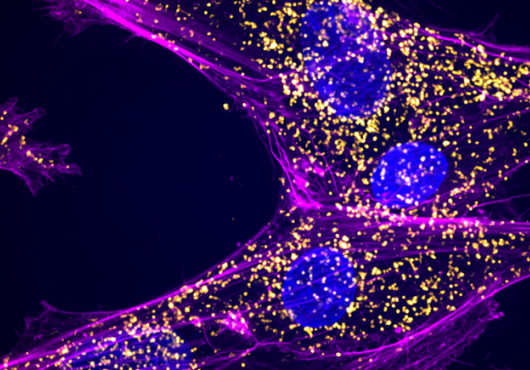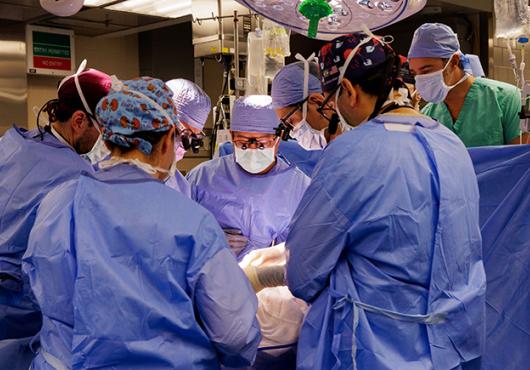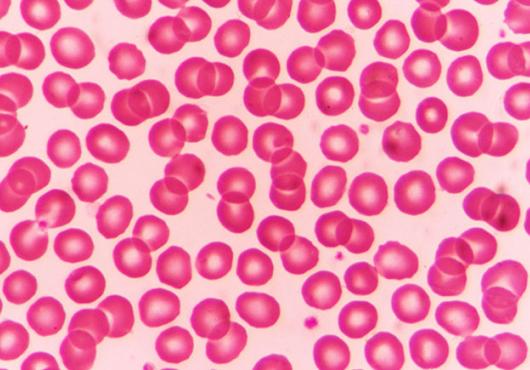
Cell nuclei light up in the reproductive organ of a worm. Modifying a particular protein (green) by adding a phosphate group (red) sends a signal to stop breaking DNA. Image: Priah Nadarajan
Breaks in DNA can wreak havoc in the body, giving rise to cancer and other health problems. Yet sometimes cells rupture their own DNA for a good reason.
During meiosis, when cells divide to become sperm and eggs, making and repairing DNA breaks helps lock together pairs of chromosomes so they can exchange genetic material and continue on their reproductive journey.
But even “good” breaks need to be controlled before they get out of hand, and so, once chromosomes have been paired up, something tells the DNA-snapping machinery to shut down. What exactly gives the command, however, has eluded researchers—until now.
Studying the reproductive organs of tiny worms called Caenorhabditis elegans, a team of Harvard Medical School scientists has identified a trio of proteins that staff the DNA-break control center. If the same proteins operate the controls in humans, the researchers say, the finding could suggest new ways to rein in runaway DNA breaks throughout the body to avert cancer, infertility, miscarriages and birth defects.
Genetics professor Monica Colaiácovo, postdoctoral fellow Saravanapriah Nadarajan and colleagues reported their discoveries in the journal eLife.

The team found that a pair of enzymes, polo-like kinases 1 and 2, sense when two chromosomes attach at a DNA break site. The enzymes then begin to sound the “no more breaks needed” alarm by sticking a chemical tag onto proteins called SYP-4. SYP-4 is part of a zipper-like structure that holds chromosome pairs together during meiosis.
The researchers watched through a microscope as a wave of this tagging, known as phosphorylation, started at the break site, shown above in green, and spread out, shown in pink, in both directions along the zipper until it reached the ends of the chromosomes.
“We think this makes the chromosomes less accessible to the machinery that makes the DNA breaks,” said Colaiácovo.
The researchers discovered that phosphorylation not only blocks additional DNA breaks, it also helps stabilize the zipper.
“Having a more stable zipper probably helps disseminate the ‘stop’ signal,” said Colaiácovo.
Further experiments showed that “when you mess up the ability to modify SYP-4, the cells never stop making double-strand breaks,” Colaiácovo added. As a result, worms with uncontrolled DNA breaks had problems with their eggs that led to infertility or sterility, Nadarajan revealed.

Having answered a fundamental question about how DNA breaks are controlled, the researchers are now wondering whether their discoveries apply to humans.
A look at sperm and egg precursor cells in mice and humans turned up a promising lead: Proteins that form the equivalent zipper are similarly phosphorylated by polo-like kinases.
Colaiácovo and Nadarajan collaborated with two core facilities at HMS to capture and analyze microscopic images of the worms: the Nikon Imaging Center, including director Jennifer Waters and advanced microscopy research associate Talley Lambert (both co-authors of the study), and the Image and Data Analysis Core, including director Hunter Elliott.
This study was supported by the National Institutes of Health (grant R01GM072551) and a Lalor Foundation fellowship.





